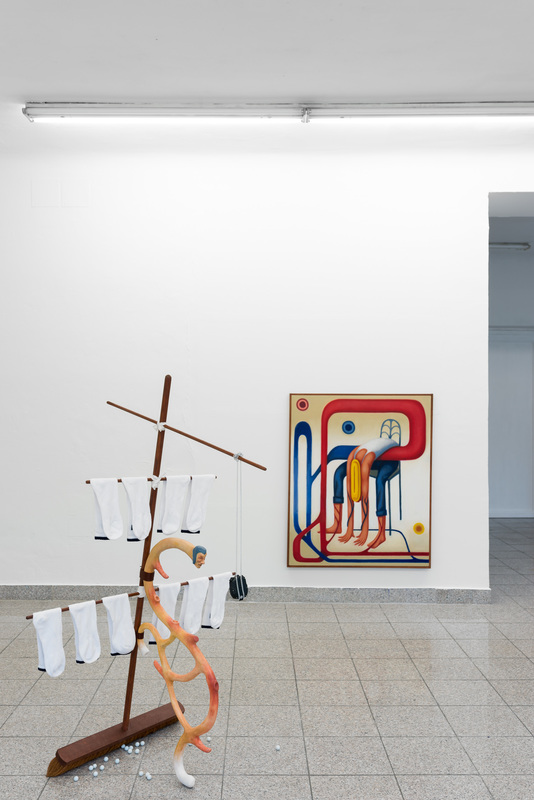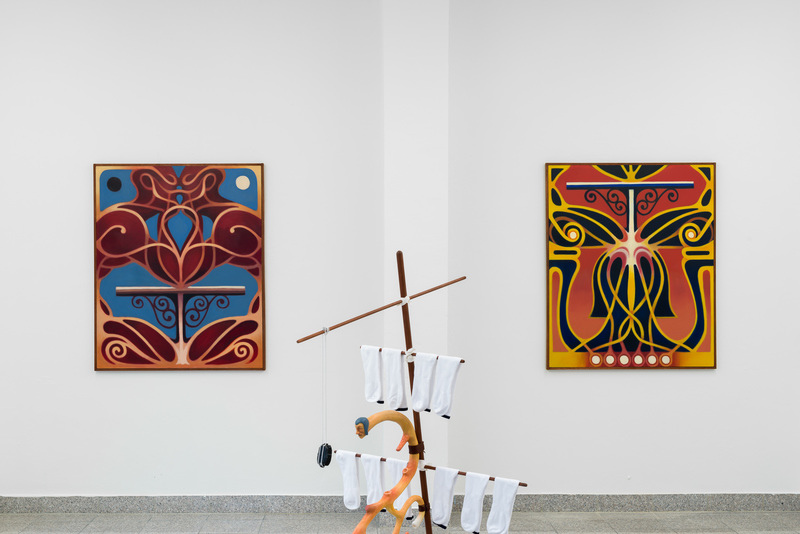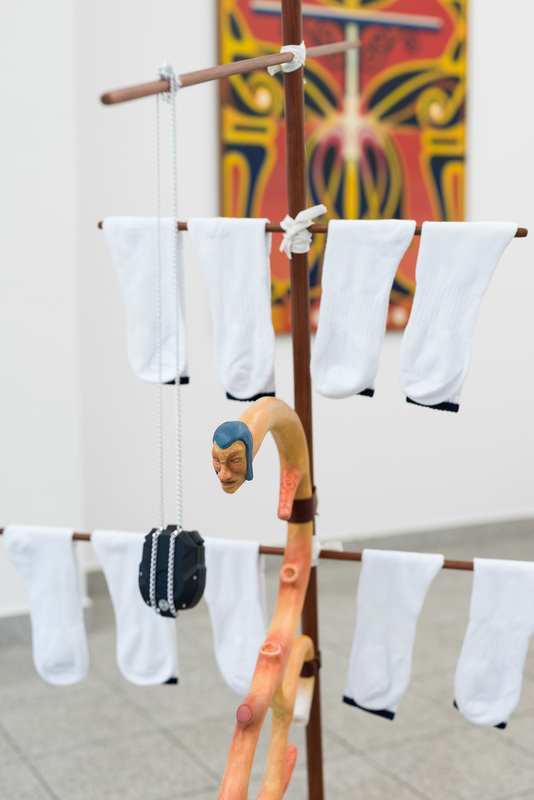Artist Spotlight: Justin Fitzpatrick
Born: Dublin, Ireland, 1985.
Lives and works in: London and Brussels.
Current exhibition: ‘Underworld,’ Kevin Space, Volkertstraße 17/4, 1020 Vienna, Austria. 13 Jan – 4 March 2018.
Upcoming Exhibitions: Frieze New York (art fair) (May, 2018), Seventeen, New York (2018).
“I like the idea of a completely uncensored way of producing, where any and every idea, thought or image that arises from inside is ‘pissed’ out in a steady stream. To ‘piss’ out art is also an attempt to break down my canonised and internalised ideas of a ‘good’ subject for figurative art. Every idea comes out, not just the ones that I place value on. This is an attempt to enact a kind of ‘base materialism’, a de-stratified mode of production, which allows for contrasting modes of address to sit together and to be regarded equally: fluency and ham-fistedness, idiocy and intellectualism, clarity and opacity, sincerity and irony”
– Justin Fitzpatrick
Underworld
Justin Fitzpatrick’s exhibition ‘Underworld’ questions society’s benighted attitude towards both normative and non-normative forms of human intimacy. Fitzpatrick’s body of work, which includes Art Nouveau inspired paintings and sculptures that blend the every day with allegorical symbols of censorship, dissect the socio-political parameters of sexuality.

‘Underworld,’ Justin Fitzpatrick, installation shot, Kevin Space. Image courtesy artist and gallery.
The show reveals three new paintings. One depicts a construction worker, whose vascular system extends outside of the body, filling the entire canvas. The painting becomes an abstracted anatomical diagram, one that seeks to materialize a connection between the individual and the other. Two ‘tabletop’ paintings show symmetrical figures embracing. Their bodies, interwoven in kaleidoscopic decoration, become one entity. The paintings take inspiration from the natural, elegant forms of the late 19th and early 20th-century movement, Art Nouveau. The ornate aesthetic that Fitzpatrick employs has become a recurring motif in his practice.
The every day, the symbolic and the ephemeral
The four sculptures that intersect the gallery space are assemblages of disparate objects: the every day, the symbolic and the ephemeral. Strangely, each sculpture contains a table leg with a cartoonish figurine of the 13th-century theologian, St. Thomas Aquinas. These are held up by various domestic appliances such as brushes, dustpans and spades, and appear to be cleaning the gallery floor.
Aquinas famously catalogued a taxonomy of sexual sins in his Summa Theologiae. He stated that any sexual act from which procreation cannot follow is ‘unnatural vice.’ Fitzpatrick satirises this notion by metaphorically absolving the space from acts of “sexual wastefulness.” This ironic gesture can be understood in multiple ways. As the artist states, ‘every idea comes out, not just the ones that I place value on.’ Thus, the viewer is encouraged to come to their own conclusions as to the works’ meaning.

‘Underworld,’ Justin Fitzpatrick, installation shot, Kevin Space. Image courtesy artist and gallery.
Grotesque realism
To accompany the exhibition, a quote has been taken from a classic literary work by the Russian philosopher and literary theorist Mikhail Bakhtin (1895–1975):
“In the modern image of the individual body, sexual life, eating, drinking, and defecation have radically changed their meaning: they have been transferred to the private and psychological level where their connotation becomes narrow and specific, torn away from the direct relation to the life of society and to the cosmic whole. In this new connotation they can no longer carry on their former philosophical functions.”
– Mikhail Bakhtin, Rabelais and his world, 1965
Through the life of French writer François Rabelais (1494-1553), Mikhail Bakhtin examined the evolution of popular humour and folk culture in the Middle Ages. In the context of this exhibition, this is a particularly enlightening text. It explores the principle of ‘grotesque realism,’ which refers to the lowering of all that is abstract, sacred and ideal, to the material level. ‘Underworld,’ too, does exactly this. Fitzpatrick’s paintings and sculptures reduce complex social structures to a ‘base materialism.’
By recalling the historic and political frameworks within which sexuality has been conditioned – as something of shame, embarrassment and “sin” – Fitzpatrick invites the viewer to ponder a world in which bodily desire was free from pathologization, free from its supposed immorality, free from the “underworld.”

‘Underworld,’ Justin Fitzpatrick, installation shot, Kevin Space. Image courtesy artist and gallery.
An evening of readings contextualizing and expanding on the themes addressed by ‘Underworld’ will take place at Kevin Space, on 25th February 2018 at 5pm.
With excerpts from:
Mikhail Baktin, Rabelais and His World (Laurence Sturla)
Guy Hocquenghem, Family, Capital, Anus (Beatrix Curran)
Rose-Anne Gush, Artistic labour of the body (Rose-Anne Gush)
Bio:
Justin Fitzpatrick (b. 1985, Dublin), lives and works in London. Recent solo exhibitions include ‘F-R-O-N-T-I-S-P-I-E-C-E’ (Seventeen, London) and ‘Uranus’ (Sultana, Paris). Recent group exhibitions include ‘Whisky et Tabou’ (Musée Estrine, Saint-Rémy-de-Provence), ‘Amazing girls / It’s complicated’ (Kevinspace, Vienna), ‘The Bloody Chamber’ (The Koppel Project, London) and Bloomberg New Contemporaries (ICA, London).
Author: George Greenhill
Cover image: ”Underworld,’ Justin Fitzpatrick, installation shot, Kevin Space. Image courtesy artist and gallery.

